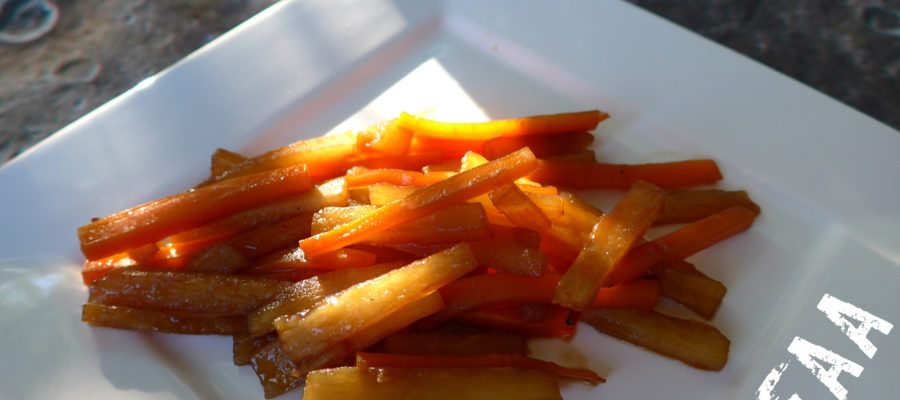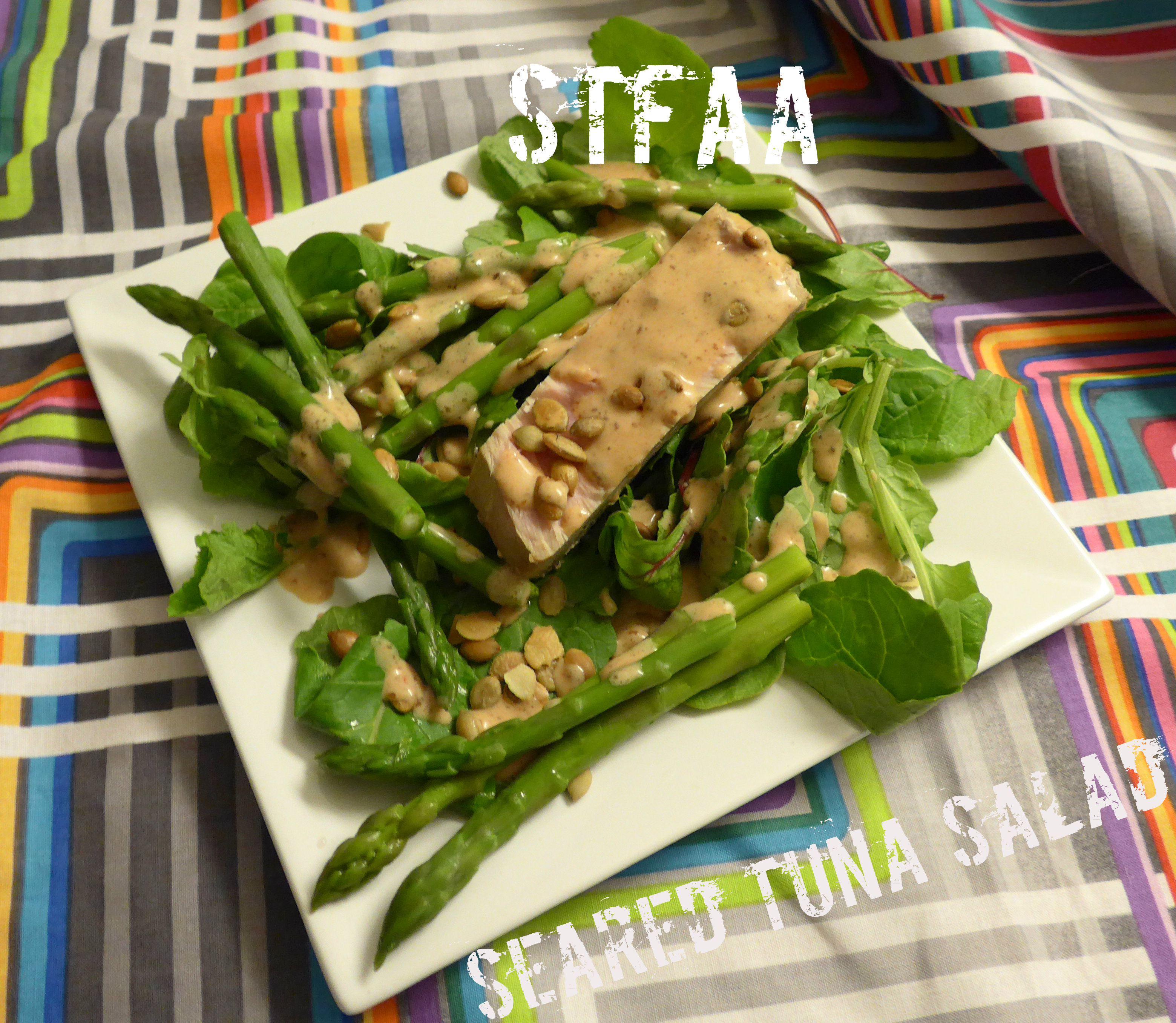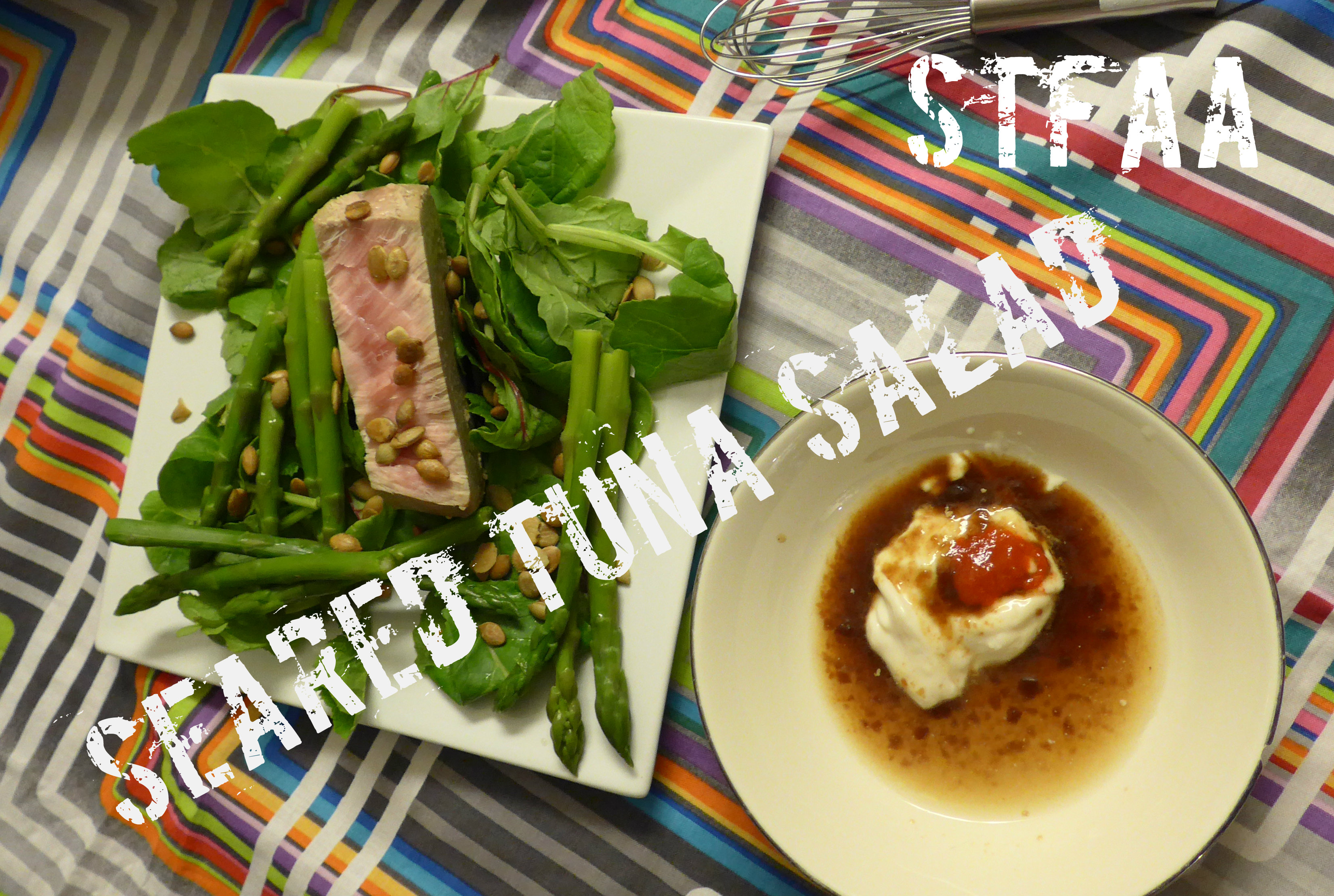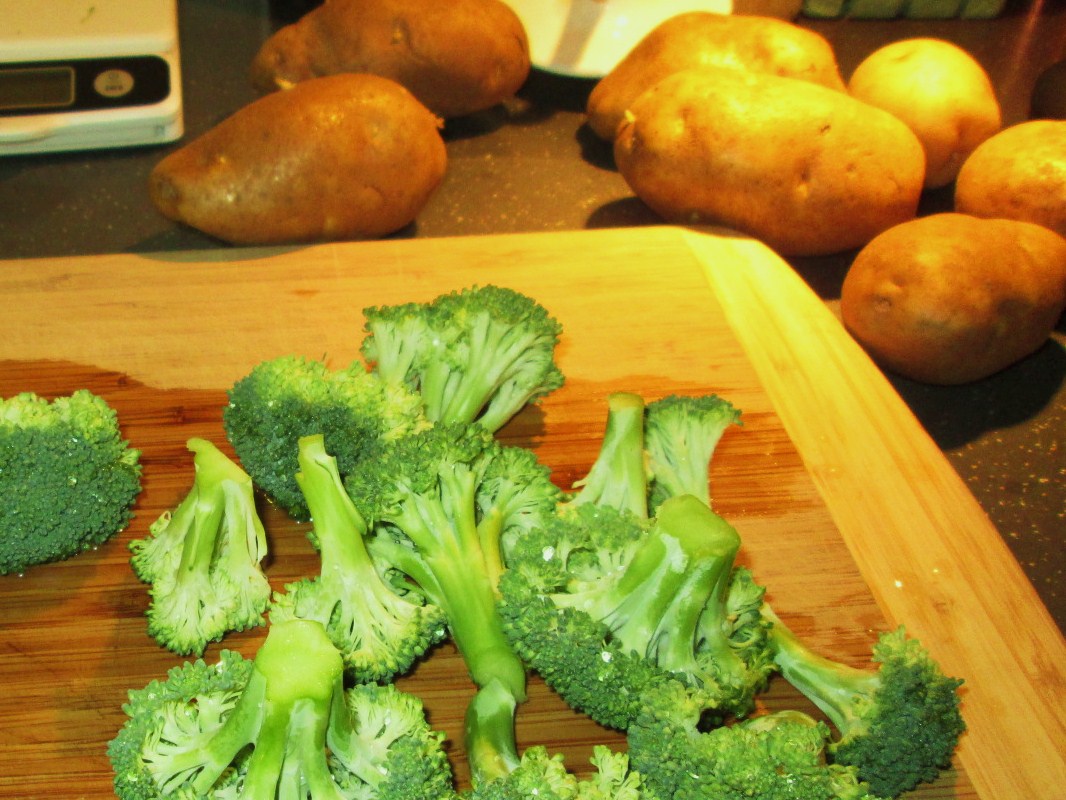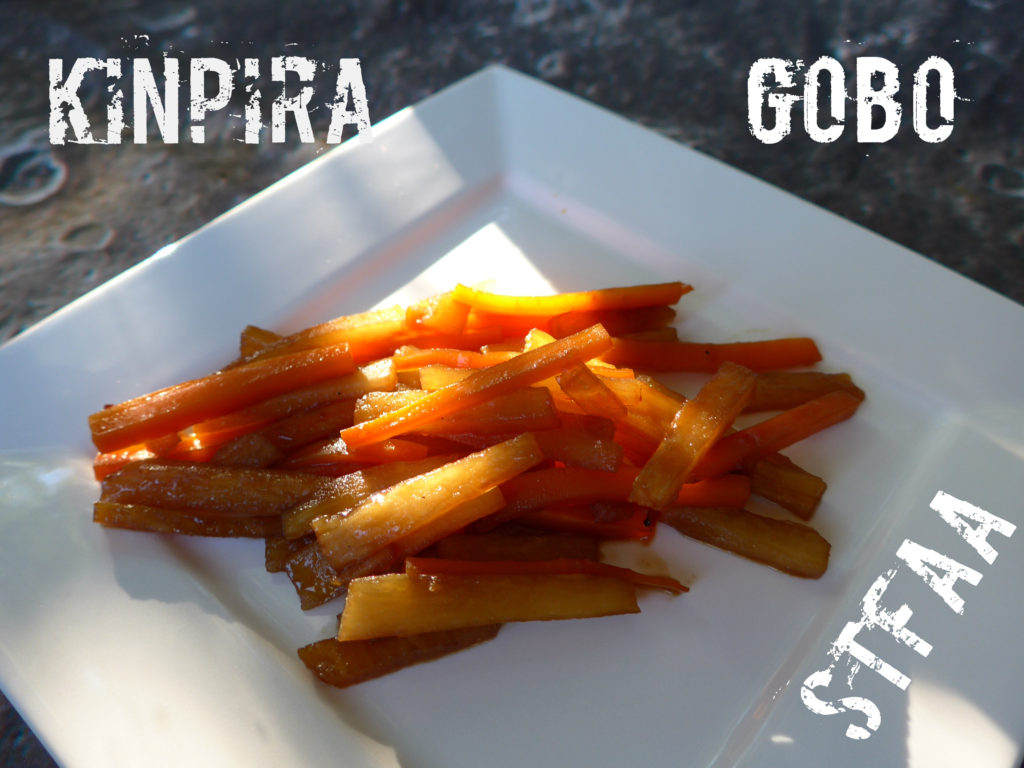
So given that we’re trying new cooking techniques this month, one of the ones that jumped out at me was kinpira, a Japanese technique involving a quick stir-fry followed by a braise, most commonly used on root vegetables. Now, I’ve likely done something like this at some point, but not on purpose as a technique. Since the technique itself seemed pretty simple, I thought I’d amp it up a bit and also find a new-to-me vegetable: enter burdock root.
Burdock root is an odd root to work with, at least in this experience. It’s rather slimy when slicing, so be careful and use a sharp knife. I think that likely explains why you then soak the “matchsticks” (try as I did, my knife skills weren’t quite up to perfect julienne this weekend) before cooking them. In this recipe, the burdock is mixed with carrot, which seems common. The recipe is a quite complex-tasting vegetable side dish, which surprised me given how simple it was. But the seasonings let the vegetable flavors come to the forefront (behind a bit of saltiness from the tamari or faux soy) and they are quite good. And that is generally my experience of Japanese food — all techniques and seasonings seem designed to remind you why the main ingredient is a wonderful flavorful part of the world.
As the technique and root were both knew to me, this is not an original STFAA recipe. It is very slightly modified from a recipe at JustBento.com, a site which is inspiring lunchbox shopping needs like you would not believe. The original kinpira gobo recipe is here.
Notice: Trying to access array offset on value of type bool in /home/maryzahc/public_html/adultfoodallergies.com/wp-content/plugins/wp-ultimate-recipe/helpers/models/recipe.php on line 254
- 1-2 burdock roots about 1 cup of matchsticks
- 1-2 carrots about 1/3 cup matchsticks
- 1 Tablespoon sesame oil if you can’t use sesame, rice bran, canola, or other high temp safe oil is good
- 1/2-1 teaspoon red pepper flake
- 1 Tablespoon sugar
- 1 Tablespoon mirin
- 2 Tablespoons tamari or soy sauce or other soy sauce substitute
- 2 Tablespoons water
- Wash, peel, and chop burdock root and carrots into matchsticks or julienne.
- Soak the burdock root in cold water for a few minutes, rinsing and changing the water once or twice.
- In a cast iron skillet, heat up the sesame oil or other high smoke point oil over medium heat.
- When oil is hot, add burdock and stir well. Let cook for 1-2 minutes, then add carrot and stir well.
- Add other seasonings. Stir well and cook another 1-2 minutes.
- Add water, if needed to coat the bottom of the pan with a shallow layer. Reduce heat to medium low and simmer for 5-10 minutes, until vegetables are tender.
